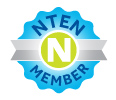Social purpose organizations (NGOs & nonprofits) are entering the information age with a vengeance. They are creating software systems to improve internal operations, communicate with stakeholders, and more effectively achieve their missions. Yet, social-purpose organizations lack access to affordable technology that meets their unique business processes and evolves as they adapt their processes to interact with their constituencies using technology.
This creates an organizational divide between the very small percentage of non-governmental organizations that can afford to adopt private sector software development strategies, and those that barely afford to deploy a few computers and a database in support of their mission.
Increasingly, all social purpose organizations are compelled into using the same software development strategies as the private sector, often contracting with software vendors whose other project is a corporate database. This is a vision of software that does not, and cannot meet the sector’s needs. Paying a corporation commercial rates every time mission-related software is needed is uneconomic for organizations that can better spend their money providing direct services to real people.
The social source technology development model—where organizations directly improve technology because it is liberated from the legal constraints of intellectual property, as long as improvements are subsequently contributed back into the community for others to improve upon—represents an unrealized opportunity for the social purpose sector to develop and disseminate state-of-the-art technology that is mission driven. With access to affordable social source technology, social purpose organizations can mould technology in their own image.
Social source software development is composed of four characteristics:
- Open source application logic. The basic application can is freely distributed and others can modify it as long as changes are contributed back into the community.
- Lowest technical requirements. Build software to the lowest possible technical requirements allowing benefits to accrue to high- and low-budget nonprofits equally.
- Collaborative. Build software collaboratively. Pool financial and intellectual resources to expand the functionality and lower costs at the same time.
- Community. Build a community around software. Over the long term, social source software can improve, evolve, and achieve economies-of-scale if there is a community of organizational users making incremental changes.
Higher education recently launched the Open Knowledge Initiative (web.mit.edu/oki/), a major social source project headed by MIT and Stanford, involving over 10 additional university partners. In the nonprofit sector, applications like ebase (http://www.ebase.org/) are being created by progressive organizations using a social source development model with contractors and in-house development staff.
Social purpose organizations can build social source software without changing their current model of releasing an RFP and hiring a contractor. In the simplest case, the contractor simply builds the software with open source technologies and that application is made available to others.
For more information on social source software and how you can use it in your organization, visit www.social-source.com.

